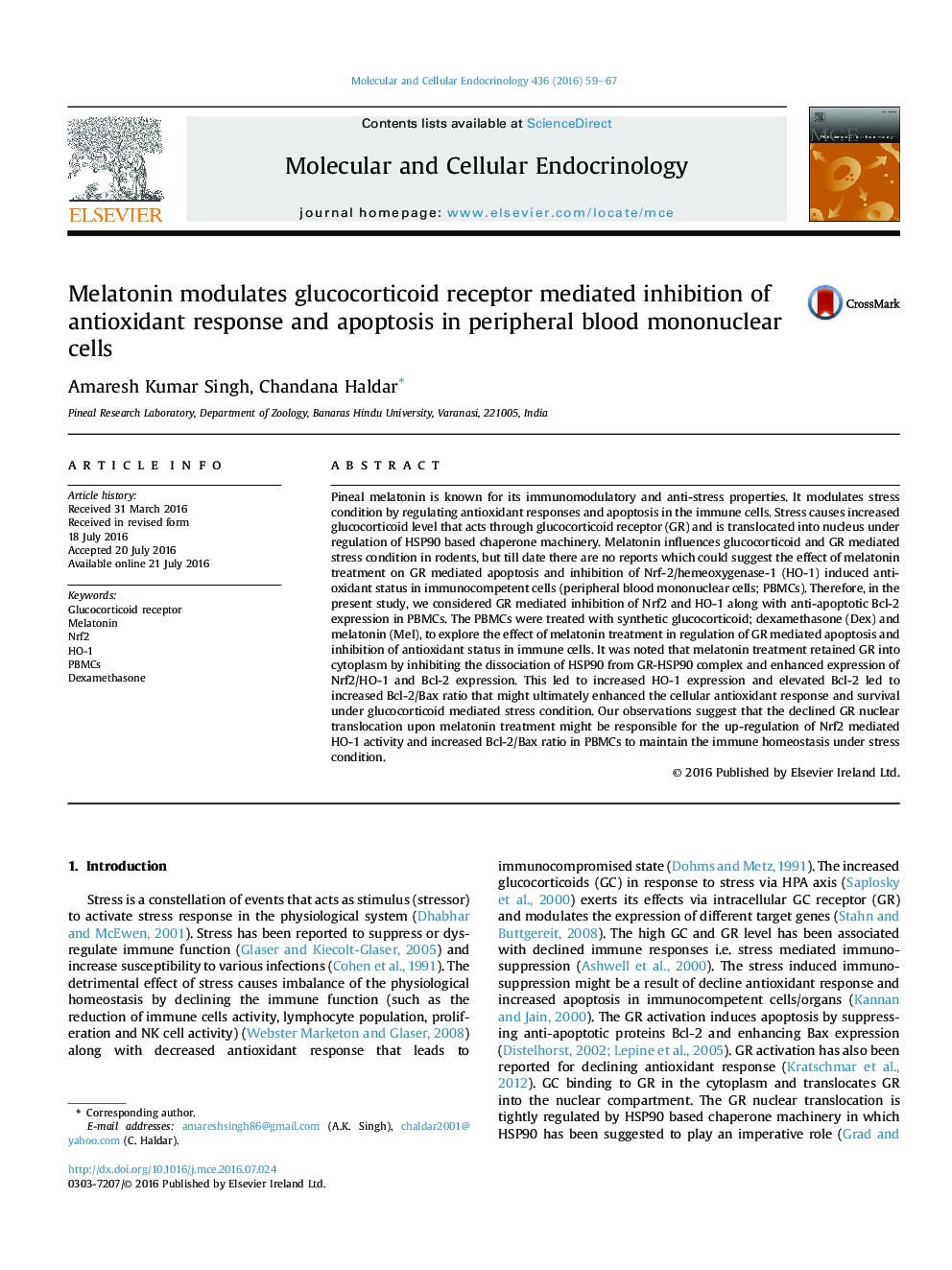| Article ID | Journal | Published Year | Pages | File Type |
|---|---|---|---|---|
| 8476707 | Molecular and Cellular Endocrinology | 2016 | 9 Pages |
Abstract
Pineal melatonin is known for its immunomodulatory and anti-stress properties. It modulates stress condition by regulating antioxidant responses and apoptosis in the immune cells. Stress causes increased glucocorticoid level that acts through glucocorticoid receptor (GR) and is translocated into nucleus under regulation of HSP90 based chaperone machinery. Melatonin influences glucocorticoid and GR mediated stress condition in rodents, but till date there are no reports which could suggest the effect of melatonin treatment on GR mediated apoptosis and inhibition of Nrf-2/hemeoxygenase-1 (HO-1) induced antioxidant status in immunocompetent cells (peripheral blood mononuclear cells; PBMCs). Therefore, in the present study, we considered GR mediated inhibition of Nrf2 and HO-1 along with anti-apoptotic Bcl-2 expression in PBMCs. The PBMCs were treated with synthetic glucocorticoid; dexamethasone (Dex) and melatonin (Mel), to explore the effect of melatonin treatment in regulation of GR mediated apoptosis and inhibition of antioxidant status in immune cells. It was noted that melatonin treatment retained GR into cytoplasm by inhibiting the dissociation of HSP90 from GR-HSP90 complex and enhanced expression of Nrf2/HO-1 and Bcl-2 expression. This led to increased HO-1 expression and elevated Bcl-2 led to increased Bcl-2/Bax ratio that might ultimately enhanced the cellular antioxidant response and survival under glucocorticoid mediated stress condition. Our observations suggest that the declined GR nuclear translocation upon melatonin treatment might be responsible for the up-regulation of Nrf2 mediated HO-1 activity and increased Bcl-2/Bax ratio in PBMCs to maintain the immune homeostasis under stress condition.
Related Topics
Life Sciences
Biochemistry, Genetics and Molecular Biology
Cell Biology
Authors
Amaresh Kumar Singh, Chandana Haldar,
